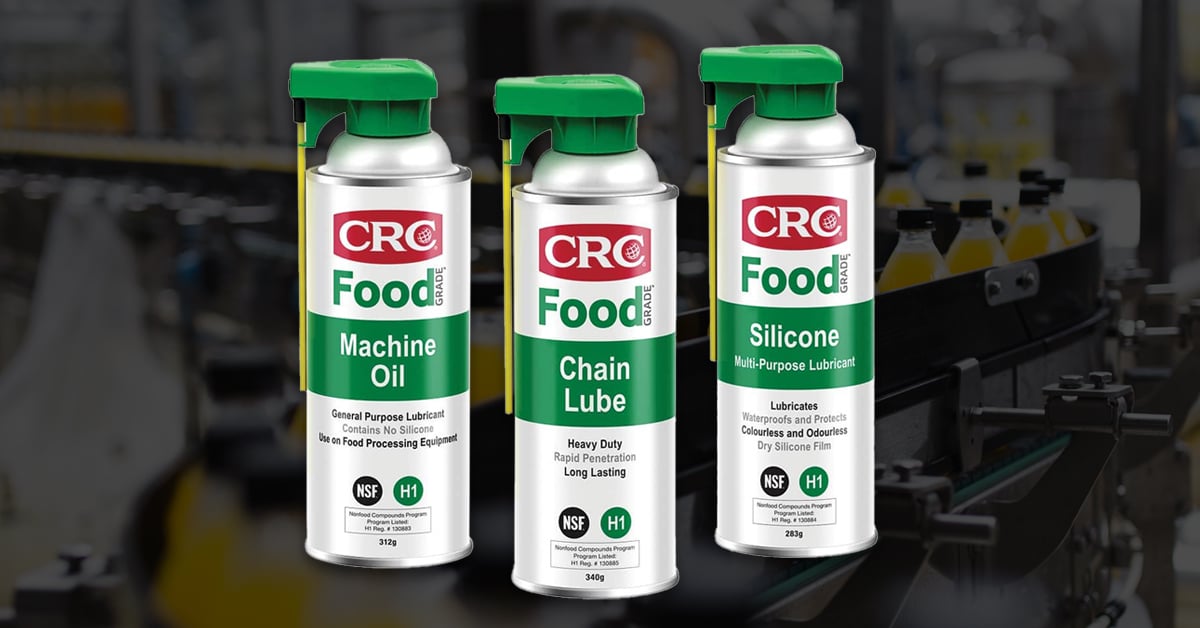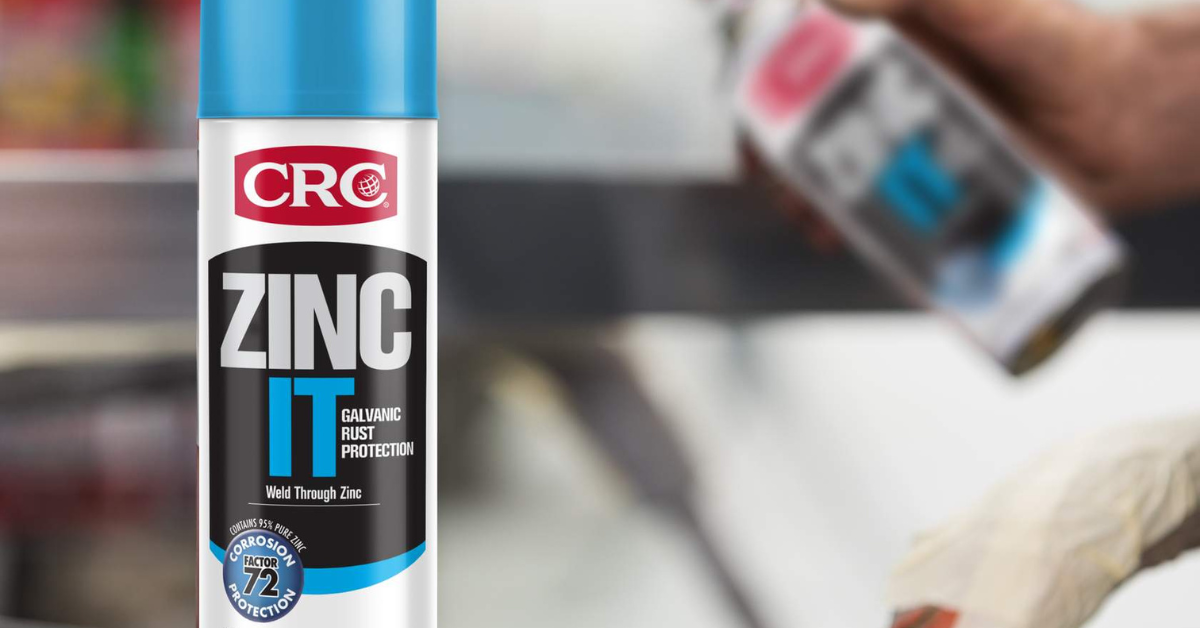Food-safe products to keep manufacturing machinery moving
Preventing contamination in food and beverage manufacturing is vital. Yet machinery and equipment on production lines requires the use of cleaning...
| SHOP CRC |
When it comes to small problems in the home that can rapidly escalate into major issues, water damage is a common one.
While it may be easy to think that a small leak in your roof flashing or guttering isn’t a big deal, the reality is that – over time – a small leak can be the start of a much bigger problem that can compromise your health, safety, and wallet.
Water ingress is the term used to describe unwanted leaks into a building and water leakage in your home or business. If you notice a leak, it’s important to identify, isolate, and repair it as quickly as possible to prevent it from becoming a bigger, more expensive issue. Particularly because most insurance companies won’t cover gradual water damage.
Often, wet patches are quite subtle. If you notice a patch of discolouration on your wall, ceiling or carpet, run your hand over it to check for dampness. Now and then, also climb into the loft space of your house and look and feel the insulation and beams for unusual dampness. This can help with the early detection of roof leaks.
Mould is a type of fungi that lives on plant and animal matter. It grows best in damp and poorly ventilated areas and reproduces by making spores. It’s not unusual to find mould in rooms that are naturally moist or have humidity in the air, like bathrooms and laundry rooms. However, if you find a new patch of mould in a dry area of your home or business, this is a sign that water is leaking in and creating unwanted dampness.
Sometimes you can smell mould before you can spot it. People describe the smell of mould as musty and stale. A new mouldy smell is an indication that you probably have unwanted moisture somewhere in your home or work premises and you should investigate to find the source of it.
If an area has been repetitively wet, it will eventually leave a stain. Run your eyes over ceilings, walls and floors now and then. If you see staining (it is usually brown or rusty looking) in paintwork, upholstery, or flooring, this could mean there’s a leak somewhere. If left unattended, this could cause serious damage.
If you hear an unexplained dripping sound inside your home or building, it’s usually the first sign of an unwanted leak, especially if it’s happening during a heavy downpour of rain.
Materials such as wood, plasterboard, and chipboard are absorbent. If they are frequently or permanently wet, over time they will become soft, flexible, and soggy – leading to what’s commonly called ‘biscuiting’, where the substrate expands and splits. This type of damage is a sign of a more significant leak or a leak that has existed for a long time.
Now that you’ve identified a leak in your home or business building, it’s time to stop the leak before it causes even more damage.
The easiest way to stop leaks is to use CRC’s Leak Stop Spray Seal. It’s our easy-to-use spray sealant for leaks that provides a waterproof seal to most hard surfaces. It bridges gaps and cracks and offers a flexible, durable, long-lasting solution to leaks. The 360° spray system allows the can to be used at any angle, which is ideal for hard-to-reach places. You can improve the longevity of the seal by coating it with any paint finish.
Here are some ways to use CRC’s Leak Stop Spray Seal:
Overgrown moss, built-up debris, and damage from fallen branches can cause damage to your roof, potentially causing leaks. Humidity, rain, and sea salt also create the conditions in which metal oxidises. Over time, metal surfaces – including metal roofing – can suffer corrosion. Holes in roofing are also commonly caused by water ingress.
CRC Leak Stop Spray Seal is an instant waterproofing stop leak spray that can bridge cracks and gaps of up to 10mm. It’s the perfect solution for repairing small holes in metal roofing sheets. CRC Stop Leak can also repair cracks and holes in roofing products made from asphalt, roofing felt, and bituminous waterproof sheeting
You can also use CRC Leak Stop Spray Seal on other areas that have been cut to install a feature, such as flashings around chimneys, weather sealing around skylights, and flashing around vent pipes. It’s the perfect leak sealant to repair any damage or wear that’s happened since they were first installed.
Leaf litter is a common cause of blocked gutters and downpipes. If water builds up, it can damage your gutters and roof and run down your walls. Moisture can cause mould and mildew, which can put your foundations, especially wood, at risk if any overflows are left unchecked. Gutters and downpipes should be cleaned regularly to remove leaves and any other foreign objects that may affect the flow of water.
If you have any cracks and holes in your guttering and downpipes, you can use CRC Leak Stop Spray Seal, even while it’s raining. This spray on leak sealer seals immediately and won’t wash off. It only takes 15 to 30 minutes to be touch dry (unless it’s raining), and cures to a tough rubber-like finish after several days.
It’s common for water ingress to occur through building walls – particularly if your home has been built using sub-standard materials, or has fallen behind in maintenance. Cracks in the brickworks or substrates are vulnerable areas and leaking can occur if heavy rain drives towards these cracks.
You can buy CRC Leak Stop Spray Seal from Bunnings and use it to repair monolithic cladding, plastered surfaces, concrete, wood, stone, and metal. It is also UV resistant and permanently waterproof. It adheres to most substrates without the use of a primer, is extreme weather-resistant, and is tolerant of structural movements of up to 10mm.
Several issues can cause windows to leak water. Examples include cracks in the glazing or a missing seal between the glass and window frame.
If you have these issues, you can use CRC Leak Stop Spray Seal to spray onto cracks in the glazing to render them watertight. It also adheres to glass, wood and PVC, and you can use it to fix loose glazing to the surrounding frame, stopping damp air and rainwater from permeating inside.

Preventing contamination in food and beverage manufacturing is vital. Yet machinery and equipment on production lines requires the use of cleaning...

Anyone who works with metal such as steel or iron will understand the risk of long-term corrosion. When metal is corroded and rusty, it weakens over...
.png)
What is bioremediation? Bioremediation is the use of microbes to break down and ‘eat’ oil, grease and carbon-based contaminants, converting them into...